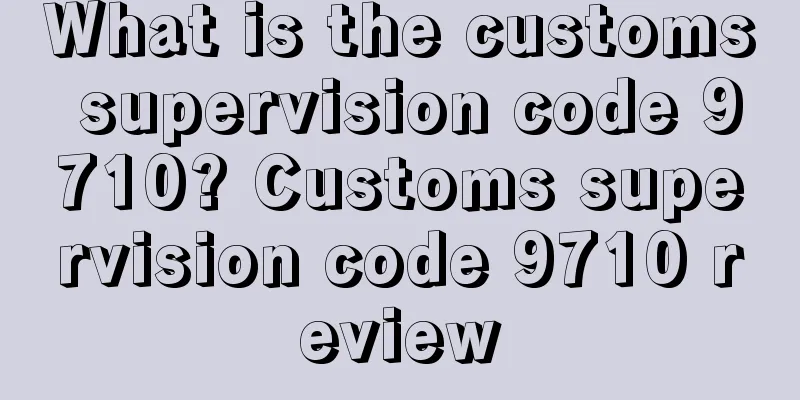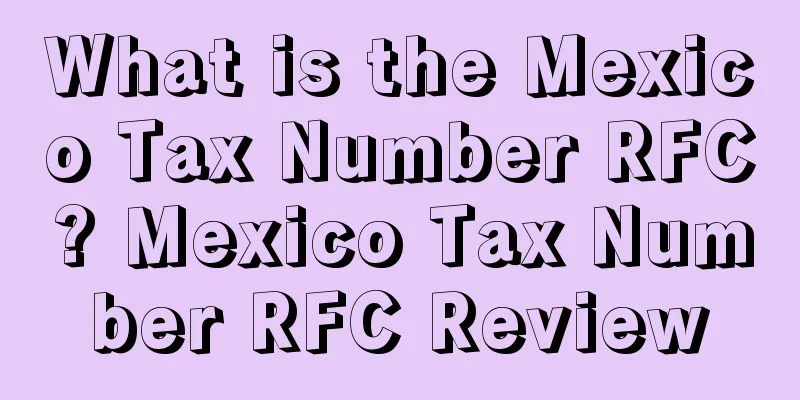What is the customs supervision code 9710? Customs supervision code 9710 review

|
Customs supervision code 9710 is referred to as "cross-border e-commerce B2B direct export" and is applicable to goods directly exported by cross-border e-commerce B2B. Start time July 1, 2020 introduce The cross-border e-commerce B2B direct export model refers to: domestic enterprises use cross-border e-commerce platforms to display online products and corporate information and establish connections with foreign companies, complete the communication, ordering, payment, and fulfillment processes online or offline, and realize the export of goods. First, the cross-border e-commerce B2B export supervision pilot will be carried out in Beijing Customs, Tianjin Customs, Nanjing Customs, Hangzhou Customs, Ningbo Customs, Xiamen Customs, Zhengzhou Customs, Guangzhou Customs, Shenzhen Customs and Huangpu Customs. Based on the pilot results, it will be replicated and promoted in customs across the country in a timely manner. Application Requirements Enterprises that choose cross-border e-commerce B2B direct export ( 9710 ) need to upload the online order screenshots generated by the trading platform and other electronic transaction information before declaration, and fill in the key information in the online order such as the name of the consignee, the name of the goods, the number of pieces, and the gross weight. Enterprises that provide logistics services should upload electronic logistics information. Customs declaration agents should fill in the industrial and commercial information of the entrusted enterprise corresponding to the goods. Orders that complete online payment on the trading platform can choose to transmit their payment information. Application Process For cross-border e-commerce B2B export goods with a single invoice value exceeding RMB 5,000 , or involving certificates, inspections, and taxes , enterprises should go through customs clearance procedures through the H2018 Customs Clearance Management System; for single invoice values within RMB 5,000 (inclusive) and not involving certificates, inspections, and taxes, enterprises can go through customs clearance procedures through the H2018 Customs Clearance Management System or the cross-border e-commerce export unified version system. Enterprises should submit declaration data and transmit electronic information to the customs through the cross-border e-commerce customs clearance service system and cargo declaration system of the " International Trade ' Single Window ' Standard Edition " or " Internet + Customs " . Among them, cross-border e-commerce B2B export-related electronic information messages will continue to use the existing B2C access channel mode of the cross-border service system, and newly support the import of B2B export declaration messages; the cargo declaration system supports the entry and import of B2B export declarations according to the existing mode.
Export Process
References
|
<<: What is USDA certification? USDA certification review
Recommend
Review display mechanism updated! Amazon is going to make a big change to the review system
Yesterday we just said that due to media exposure...
Amazon backend major update! Multiple account policy relaxed?
Recently, a message prompt appeared in Amazon'...
2021 Canadian consumer peak season shopping trend survey: clothing spending accounts for the largest proportion!
According to a survey by the Retail Council of Can...
What is Temple & Webster? Temple & Webster Review
Temple & Webster was founded in 2011 and focus...
Many pajamas are recalled by CPSC! Amazon sells them! Sellers should check themselves!
It is learned that in the past few weeks, CPSC has...
Breaking news! UPS has stopped accepting deliveries! My brother-in-law is also going to start an independent website
The COVID-19 pandemic became tense again before th...
Amazon AI ranking mechanism is in beta! Will Amazon subvert the A9 algorithm?
As we all know, if we want to get continuous order...
What is takealot.com? Takealot.com Review
Takealot.com is a leading online retailer in South...
What is profusion cosmetics? Profusion cosmetics review
Profusioncosmetics is a brand website that sells b...
Unexpectedly, the number of Chinese mask manufacturers authorized by the FDA dropped sharply from 87 to 14
At present, 1,291,719 people have been diagnosed i...
What is Nobu? Nobu Review
Nobu is a cross - border e- commerce integrated ma...
What is Madrid International Trademark Registration? Madrid International Trademark Registration Review
Madrid international trademark registration refers...
What is Amazon Store? Amazon Store Review
Amazon Store is a feature that Amazon sellers can ...
Operational Tips-Detailed Explanation of Amazon Category Review (Must-have for Sellers)
In order to maximize customer satisfaction, Amazo...









